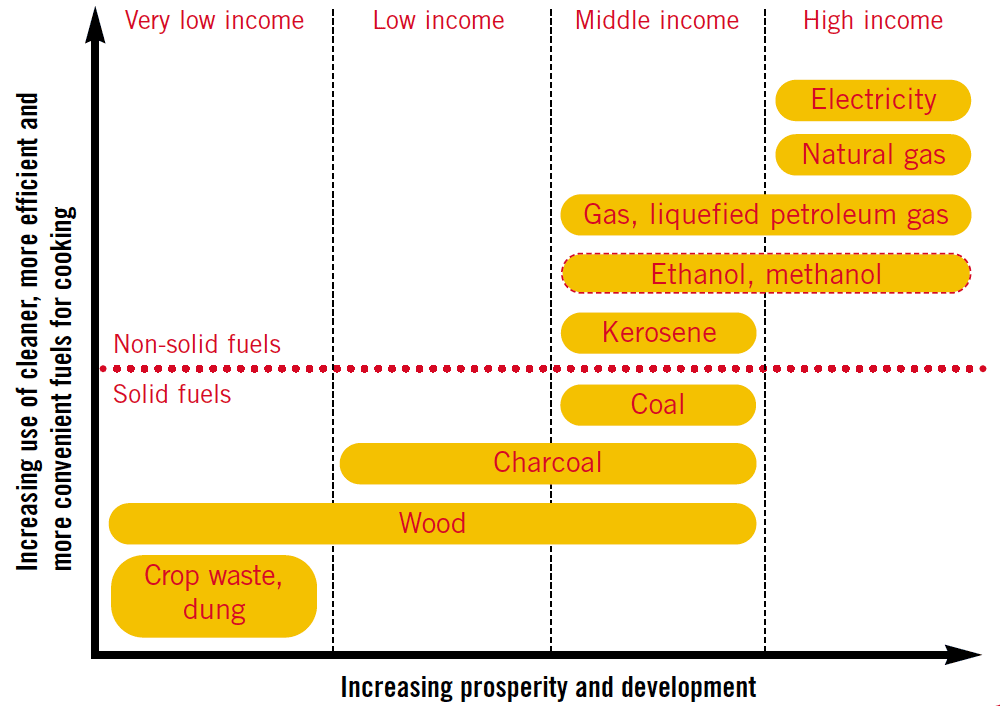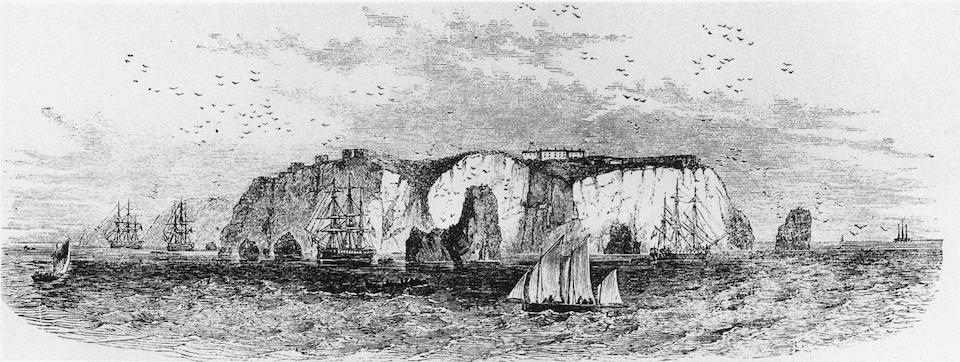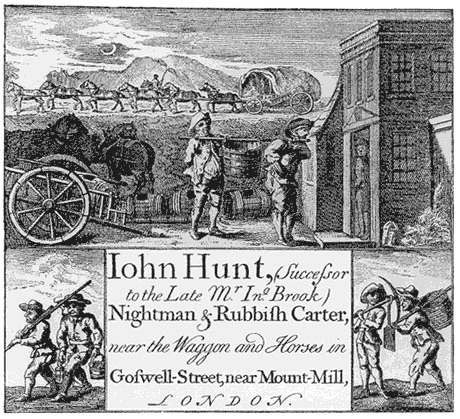When life was literally full of crap
by Jason Crawford · December 21, 2020 · 6 min read
If you want a single, vivid, and frankly disgusting example to hold in mind to remember how much our lives have improved over the last ~150 years…
Consider shit.
Literally, excrement. How much previous generations had to think about it, be around it, even handle it.
Before the automobile, horses flooded the streets, and cities were mired in their muck. According to Richard Rhodes’s Energy: A Human History, in New York City, horses dropped 4 million pounds of manure and 100 thousand gallons of urine on the streets every day. (!) And in The Rise and Fall of American Growth, Robert Gordon quotes this passage from The Horse in the City:
The smell of manure heaps and the clouds of flies they attracted were some of the most objectionable nuisances stables created. The nuisance was especially bad in the summer…. On New York’s Liberty Street there was a manure heap seven feet high. New York streets … were often covered with layers of manure.
Shoveling shit was literally a full-time job. And one of the key uses of horses was to pull the wagons that carried away horse droppings.
But excrement wasn’t just something to be cleared away. Oh no, that would be a profligate waste! Shit was valuable. It was a treasure. It was gold.
It was fertilizer.
For thousands of years, manure, mainly from livestock, was the primary way to renew the fertility of the soil after each harvest. Agricultural systems were defined in large part by how much manure they could effectively use on arable land. The transition from slash-and-burn to the two-field rotation of antiquity depended on livestock that would graze in pasture, then be penned in on fallow fields at night to fertilize it with their droppings. The transition to the three-field rotation depended on the plow, which among other things allowed manure to be buried under the soil; and the wagon, which allowed more manure to be transported.
Dung was also used as fuel, in areas that didn’t have much firewood, and even as a building material. The poorest areas today still burn dung for fuel, contributing to indoor air pollution:

By the 1800s, the manure trade had gone global. The Chincha Islands, off the coast of Peru, where it rarely rained, had been accumulating seagull droppings for thousands of years. The accumulated guano, stories high, was mined like coal or lime and exported to Europe and the US. A description and picture of guano mining, from Rhodes’s Energy:
Working with pickaxes from the shore inward and the top down, the miners created Dover-like yellowish cliffs that looked from a distance like dirty snow. One German observer compared them to “a dark platter on which an enormous yellow cheese is being cut.” A survey conducted in 1854 concluded that the original mass of guano on the three islands had totaled no less than 13 million short tons (11.4 million metric tons), under hills covered with what one investigator calls “a dazzling coat of guano glass,” a crust of calcium phosphate. Another 1854 observer found the guano surface “like light dry earth and full of holes” that the birds scraped out for nesting and shelter. The surface was “difficult to walk upon, there being no certainty that every other footstep will not sink in nearly to the knee.” A few feet below the surface, the guano “became compact,” however, “and from thence through its whole thickness, it is of nearly the consistence of Castile soap.”

The demand for fertilizer was so great that the islands quickly reached Peak Dung, and were exhausted in about 40 years. The need was so acutely felt that multiple commentators of the 1800s criticized city sewers because they did not capture human waste for reuse. Sir William Crookes, in an 1898 speech, praised “the treasure locked up in the sewage and drainage of our towns” (!), lamented the “unspeakable waste” of “recklessly returning to the sea what we have taken from the land,” and pondered “converting sewage into corn.” The 1902 Yearbook of the US Department of Agriculture also refers to “the vast waste of nitrogenous material that is involved in modern sewage methods. Millions of dollars’ worth of nitrogen which would naturally return to the soil… is every year carried off in various waterways….” In Les Miserables, Hugo laments the same thing during his digression on the Paris sewers. “To employ the city to enrich the plain would be a sure success. If our gold is manure, on the other, our manure is gold.… A sewer is a mistake.”
Indeed, not all the waste from the city was lost! Horse manure was carted back to the farms, as was some human waste, known as “night soil”. Collecting this stuff must have been a terrible job, but one John Hunt was proud enough to print this fancy calling card:

Night soil is still used in poor countries. In her memoir of life in North Korea, Yeonmi Park recalls her government “poop quota”:
One of the big problems in North Korea was a fertilizer shortage. When the economy collapsed in the 1990s, the Soviet Union stopped sending fertilizer to us and our own factories stopped producing it. Whatever was donated from other countries couldn’t get to the farms because the transportation system had also broken down. This led to crop failures that made the famine even worse. So the government came up with a campaign to fill the fertilizer gap with a local and renewable source: human and animal waste. Every worker and schoolchild had a quota to fill. You can imagine what kind of problems this created for our families. Every member of the household had a daily assignment, so when we got up in the morning, it was like a war. My aunts were the most competitive.
“Remember not to poop in school!” my aunt in Kowon told me every day. “Wait to do it here!”
Whenever my aunt in Songnam-ri traveled away from home and had to poop somewhere else, she loudly complained that she didn’t have a plastic bag with her to save it. “Next time I’ll remember!” she would say. Thankfully, she never actually did this.
The big effort to collect waste peaked in January, so it could be ready for growing season. Our bathrooms in North Korea were usually far away from the house, so you had to be careful that the neighbors didn’t steal from you at night. Some people would lock up their outhouses to keep the poop thieves away. At school the teachers would send us out into the streets to find poop and carry it back to class. So if we saw a dog pooping in the street, it was like gold. My uncle in Kowon had a big dog who made a big poop—and everyone in the family would fight over it.
In sum, excrement played a major role in life before the 20th century. It was literally a crappy world.
How did we get out of this shitty situation? A few key inventions of the early 1900s: synthetic fertilizer, which released us from bondage to manure; and motorized transport—first electric streetcars, then automobiles—which ended (in Gordon’s phrase) “the tyranny of the horse”.
The adoption of both of these, I’m sure, was hastened by the new germ theory and the scientific realization that feces were a vector for disease. Rhodes writes houseflies, which live on dung, were long regarded as merry companions, until public health messaging changed their image:
Urban sanitary science in the last years of the nineteenth century, newly informed of the invisible vectors of disease, focused on filth as a signifier, flies in particular. Before then, flies had been considered charming and benevolent at best, useful scavengers at worst. “Our common houseflies seem jocund with mirth,” an observer wrote playfully in 1859, “while they chase one another and dance their giddy rounds in the sunbeams.” By the end of the century, reports a historian of public health, the fly had been “transformed from a friendly domestic insect into a threat to health and hearth…. Its dangers were exaggerated so that at times it became as certain a killer as the mosquito that spread yellow fever and malaria. Health officials sought to develop the idea of germs into a practical and comprehensible weapon against disease. To do this, they portrayed flies as germs with legs.” And flies, of course, luxuriated in horse manure; their larvae fed on it. The head of the US Department of Agriculture’s Bureau of Entomology estimated in 1895 that the ubiquitous manure of horses bred 95 percent of all America’s flies.
Bottom line: The fact that excrement is hidden and flushed away from our daily lives—rarely seen, touched or smelled—is not the normal state of human existence. It is a great achievement of the modern world.
Relevant books
The Rise and Fall of American Growth
I may receive a commission on purchases made through Amazon links in this post.
